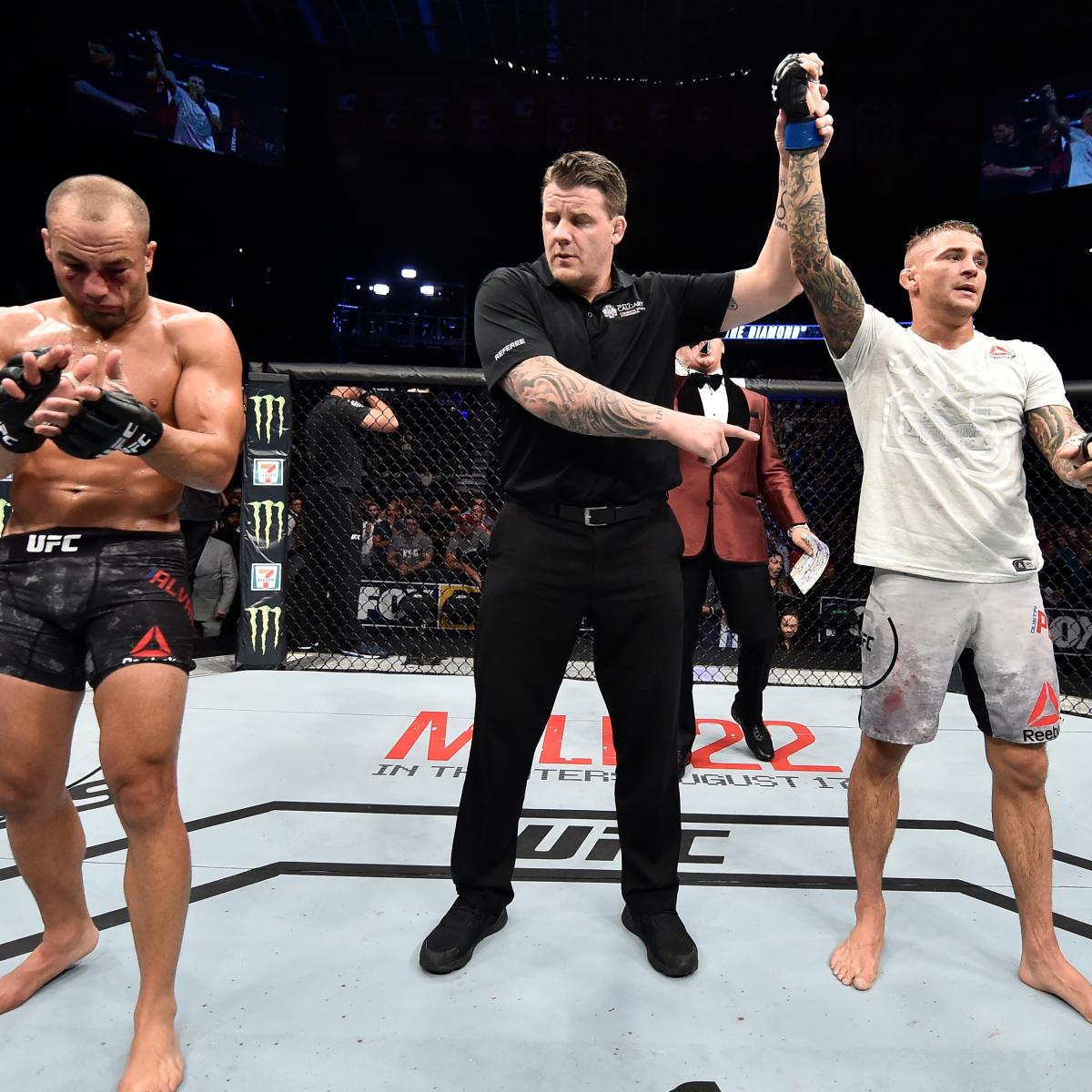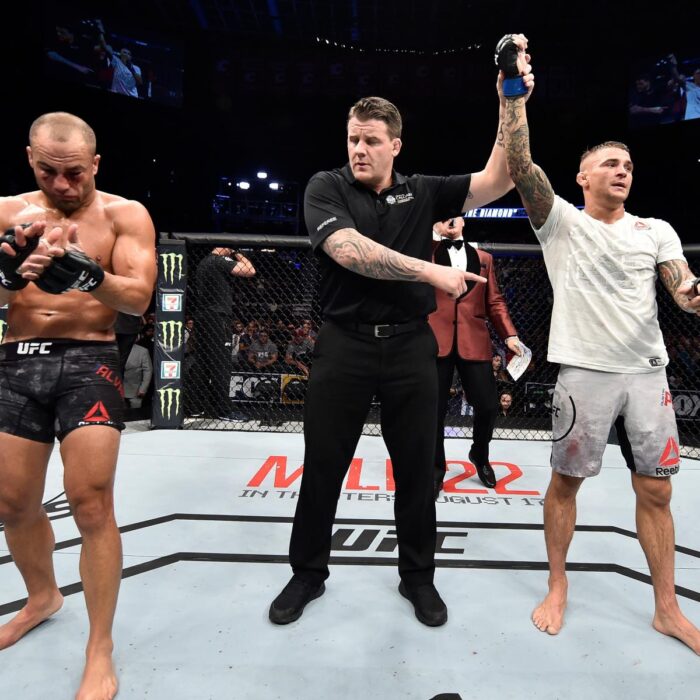
MMA judging is the tough job that no one wants. Every time judging is mentioned, it’s one of two scenerios. Either the judge perpetrated an egregious scorecard and the fans are upset, or DC is saying, “I’m glad I don’t have that job.”
The former scenario seems to be in the news more recently. I’m not here to rag on the judges, (unless it’s Adalaide Byrd). I’m here to bring a little sympathy to the devil. It’s easy to say that MMA judging is a broken system. Yes, there are cards that are verified head-scratchers, but the 10-9 must system is the easiest to implement. For the casual fan, that judging system is going to be the quickest way to understanding a fight. It’s close to boxing, which is arguably MMA’s nearest mainstream cousin.
A Little Bit Of History
The UFC adopted the 10-9 must system in the year 2000. At the time, lawmakers didn’t want MMA to be legal after the first few UFC events. John McCain famously referred to the sport as “human cockfighting,” which is less exciting than it sounds. Ironically, the sport would become accepted in big part because of John McCain. The high school wrestler and US Senator helped mold the rules. A key to this puzzle is that John McCain himself was an amateur boxer in the Naval academy and would regularly attend boxing matches since the 1950’s.
His love for boxing could have been one of the things that fueled his repulsion for MMA. He said the kicks and choke-holds were barbaric. It was the ground and pound that McCain hated the most. He called it “Un-American” to “hit a man when he was down.” As chairman of the commerce committee in 1997, McCain cut the potential audience of UFC PPV events from 35 million down to 7.5 million in 1999.
The UFC sold to Dana White and the Fertitta’s in 2001 and decided to work with state commissions across the country. This made the sport legal and able to reach a mainstream audience. It’s easy to picture John McCain directly affecting the judging criteria in accordance to boxing rules. It was under McCain that we saw the implementation of wild ideas from boxing such as weight classes, the banning of groin strikes, and rounds. Also, the aforementioned 10-9 must system.
Controversies Within Judging
Like I said, I don’t want to rip on judges. I’ve never judged a fight from anywhere except my couch and seats I’ve paid for. There are decisions I don’t necessarily agree with, but can see how someone would judge the fight that way. However, there are instances that even the most casual of casuals can say are out of touch. The most recent example of this is Cory Sandhagan vs Marlon Vera. One judge giving the last three rounds to Vera has a lot of hackles up in the MMA blog-o-sphere.
Joe Rogan himself chimed in with some choice words about judging. He suggest upwards of ten highly trained judges using aggregate scores that give individual points to takedowns and escapes, as well as striking. Ten judges? Ten judges!?
The fact is that a vast majority of decisions are just. It’s rare there is an obvious robbery. Most fights fall within an acceptable margin of error. Adjusting these rules will confuse fans and negatively affect fighters for as long as it takes to adjust. Enacting one at a time and seeing what works would be more prudent and profitable.
While I can’t knock Joe Rogan’s credentials, and I do agree with him on several key points in his continuing discourse about MMA judging, I do think some of it is short sighted. If you change the scoring, you change the game. This is due to the athletes adapting to the changes.

Athletic Adaptability
The unified rules have an outline for judging criteria that places effective striking above effective grappling. Effective aggressiveness is judged above “fighting area control” or, as it’s referred to most often, octagon control. What this does is create a style of MMA that values standup over grappling. A fighter will more often focus on what the judges value in order to get the win, and in turn the win bonuses. This is a longwinded way of saying that an athlete will adapt to the ruleset to get their most profitable outcome.
Every martial art has its form of competition. Those competitions come with unique rule sets. You see with with Karate and Tae Kwan Do. These two martial arts have lost practicality because of competitions being judged by points as opposed to effective striking. When points win medals, athletes use points.
The one constant is that with every change in the rules, there is a change in how the game is played. There is no reason to believe that current MMA is the exception. One only has to go watch old Pride fights to see how a few shifts in judging and rules changes an entire sport. You should probably just go watch some old Pride fights.
Grappling has always had a problem with this. While it touts itself as the most effective martial art, with a lot of credit going to the first UFC events as proof, there is much to be said about the desire to make grappling a viewer friendly sport. It’s funny to imagine John McCain watching Ken Shamrock vs Royce Gracie and saying, “why don’t they just stand up?” I digress.
Who’s Doing It Right?
ONE Championship is doing a great job of diversifying rulesets and giving the audience pure BJJ and Muay Thai matches, while even doing some fights that are one round MMA and one round kickboxing. They are succeeding in one category that the UFC fails consistently. They are able to experiment with different rules and judging criteria without the fear of losing viewers.
The UFC suffers for the lack of effective marketing. While their best grapplers are forced to learn an entirely different form of BJJ geared toward allowing strikes, ONE FC is scooping up America’s best practitioners and letting them fight for belts on a global stage. Mikey Musumeci, the Ruotolo brothers, Gary Tonon, and Marcus “Buchecha” Almeida all fight in ONE FC in different categories, and have all found much more success than their UFC counterparts.
A Modest Proposal
Instead of doing a wholesale overhaul of the judging system as some have suggested, I would propose keeping the good and throwing away the bad through a trial and error system. In other sports you see rule changes and judging criteria set into play during the off seasons in the minor leagues. If the UFC worked to tweak their system through smaller organizations such as LFA and Cage Warriors, or even Dana White’s Contender Series (where Dana awards contracts at will regardless of the judges’ score) then we could see a more accurate approach to MMA judging.
I won’t hold my breath, though. The UFC tends to have an “if it ain’t broke don’t fix it” mindset. This goes along with the UFC classic, “if it is broke don’t fix it” attitude.
Related

Featured Articles
-


Features
/ 10 hours agoDeep Dive into Ted Williams and the Red Seat Home Run
The home run Ted Williams hit on June 9, 1946, is marked to this...
-


College Football
/ 21 hours agoNFL Draft 2024 Scouting Report: Byron Murphy II, DT, Texas
Byron Murphy II, DT, Texas Height: 6’0 ½” Weight: 297 Arm Length: 32...
-


College Football
/ 22 hours agoNFL Draft 2024 Scouting Report: Jer’Zhan Newton, DT, Illinois
Jer’Zhan Newton, DT, Illinois Height: 6’2” Weight: 304 Arm Length: 32 ⅜ ...
-


College Football
/ 22 hours agoNFL Draft 2024 Scouting Report: Graham Barton, OT, Duke
Graham Barton, OT, Duke Height: 6’5” Weight: 313 Arm Length: 32 ⅞ ...









